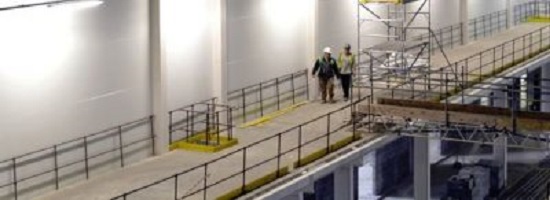What rights do neighbours have when construction gets noisy and troublesome? Jonathan Pawlowski, construction litigation partner at Brecher Solicitors reports. Above: Jonathan Pawlowski is construction litigation partner at Brecher Solicitors The London skyline is constantly evolving, with tired old buildings being replaced by ever more adventurous skyscrapers redefining the City’s visual identity. These new structures are often marmite, but we soon fall in love once they have a nickname, and a restaurant with a view always helps us to get over our initial misgivings. All this construction work does comes at a cost, though. Those of us who work or live next to a building site have to put up with noise, dirt and vibrations that can, at times, become excessive. When the situation becomes intolerable, the only solution is to look at the remedy for private nuisance and apply for an injunction to stop that nuisance and prevent it from reoccurring. In these situations, the court has the difficult task of balancing the rights of those suffering and the right of landowners to develop their land. From the landowners’ perspective, they will have spent years and a small fortune developing a design and obtaining planning permission, and from the claimant’s point of view, their quality of life is being materially affected.Who wins? The case The benchmark 2014 case of Coventry and others v Lawrence and another is one of only a handful of rulings on private nuisance. It is especially welcome, as previous case law had led to uncertainty for developers. While not dealing directly with the issue of construction noise and disturbance, Coventry clarified a number of issues, including whether it is possible to obtain a right to make a noise, the extent to which planning permission is relevant in determining if a nuisance exists, as well as the approach of the courts when deciding whether to award the aggrieved party a sum of money or an injunction. The facts In 1975, planning permission was granted for Coventry to construct a stadium for “speedway racing and associated facilities”, which was renewed on a permanent basis in 1985. A year earlier, in 1984, stock car and banger racing had started and after 10 years a certificate for lawful use was granted. In 2006, Katherine Lawrence and Raymond Shields moved into in a bungalow close to the stadium. Two years later they issued proceedings against the operators of the stadium for noise nuisance. At first instance, they were successful: the judge ordered an injunction limiting the level of noise emitted by the complex. The Court of Appeal then overturned the decision on the basis that the claimants had failed to establish that the actions on Coventry’s land constituted a nuisance. Lord Justice Jackson emphasised that Coventry had been granted planning permission, the conditions of which had not been breached. The Supreme Court eventually decided in favour of the claimants, ruling that the noise was a nuisance and restoring the original injunction. The decision In ruling, the Supreme Court considered these five questions: Can a right to commit a noise nuisance be obtained by prescription (i.e. long use)? Yes. However, to justify the establishment of a right to create a noise by prescription, the defendant must show that the relevant activity has been carrying on at the site for over 20 years without substantial interruption. To what extent can a defendant rely on the fact that the claimant “came to the nuisance”? In this case, the motor sports activities began many years before the claimants moved into their house. Nevertheless, the Supreme Court held that it is not a defence to show that the claimant acquired or moved into the affected property after the nuisance started. It may be a defence, however, where the pre-existing activity only becomes an alleged nuisance when the claimant changes how they use their land. In Coventry, as the neighbours’ property was always a residential house and had been built before the stadium was constructed, this defence did not succeed. Can the actual use of the defendant’s premises be considered when assessing the overall character of the neighbourhood? Nuisance claims rarely succeed where the activities giving rise to the nuisance are part of the established pattern of activity in the neighbourhood. Is planning permission a defence to a nuisance claim? Not necessarily. The fact that a party has been granted planning permission to undertake the activity that gives rise to the nuisance will not normally assist a defendant. Nevertheless, the existence and terms of the planning permission could be relevant. In this case, a framework of conditions existed that governed acceptable noise limits, which the court found to be a helpful when considering if the noise levels amounted to a nuisance. What is the appropriate remedy? Prior to Coventry, the courts would award an injunction unless there were exceptional reasons not to. The leading authority on the issue was Shelfer v City of London Electric Lighting Co [1985], which established that damages can only be awarded instead of an injunction where: the injury to the claimant’s legal rights was small; the claimant could be compensated in money; a small payment would have been adequate compensation for the claimant; and it would have been oppressive to the defendant to grant an injunction. Importantly, Lord Sumption in Coventry labelled this test “out of date”, and now a person defending a nuisance claim may argue that damages are a more suitable alternative to an injunction. This should be very welcome news to developers, not only in the realm of private nuisance, but also rights of light, where the same tests apply. Practical implications Coventry clarified the status of planning permission in nuisance claims, following previous contradictory case law on the issue. Those suffering from a nuisance are now able to establish their claim more easily, as such planning permission will normally be of little evidential value. Defendants, on the other hand, will be encouraged that the Courts may now be more willing to order compensation instead of an








